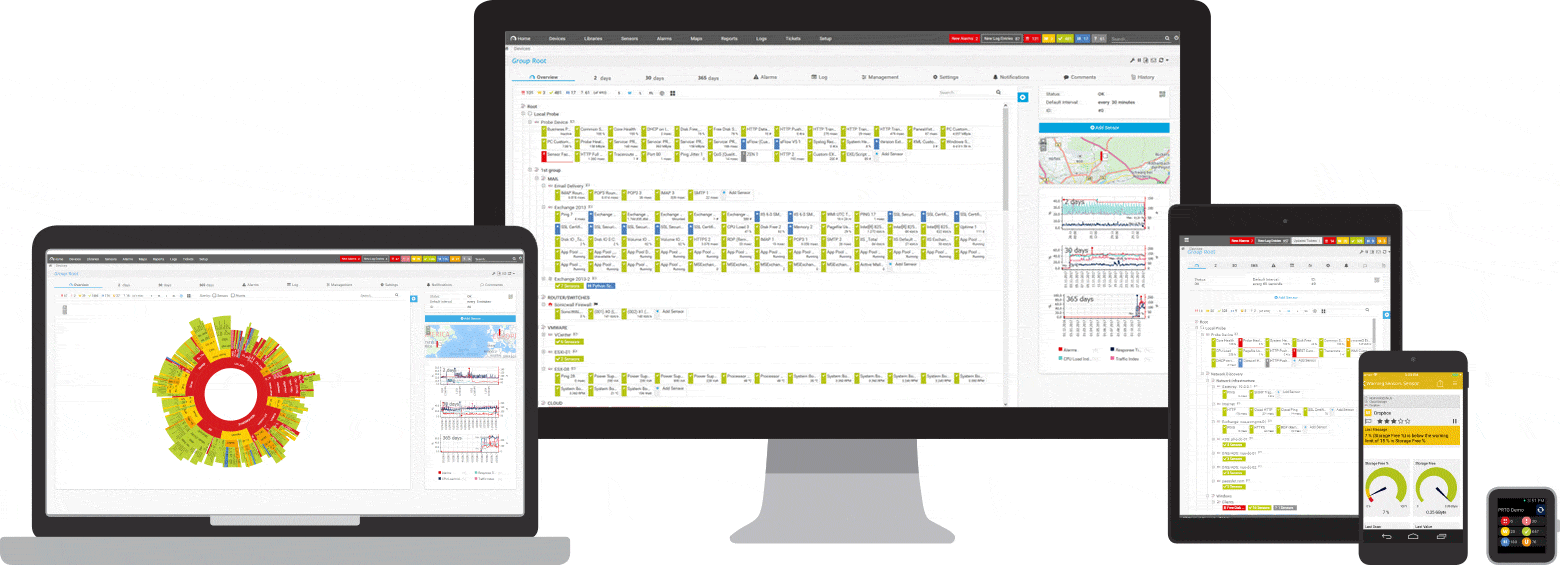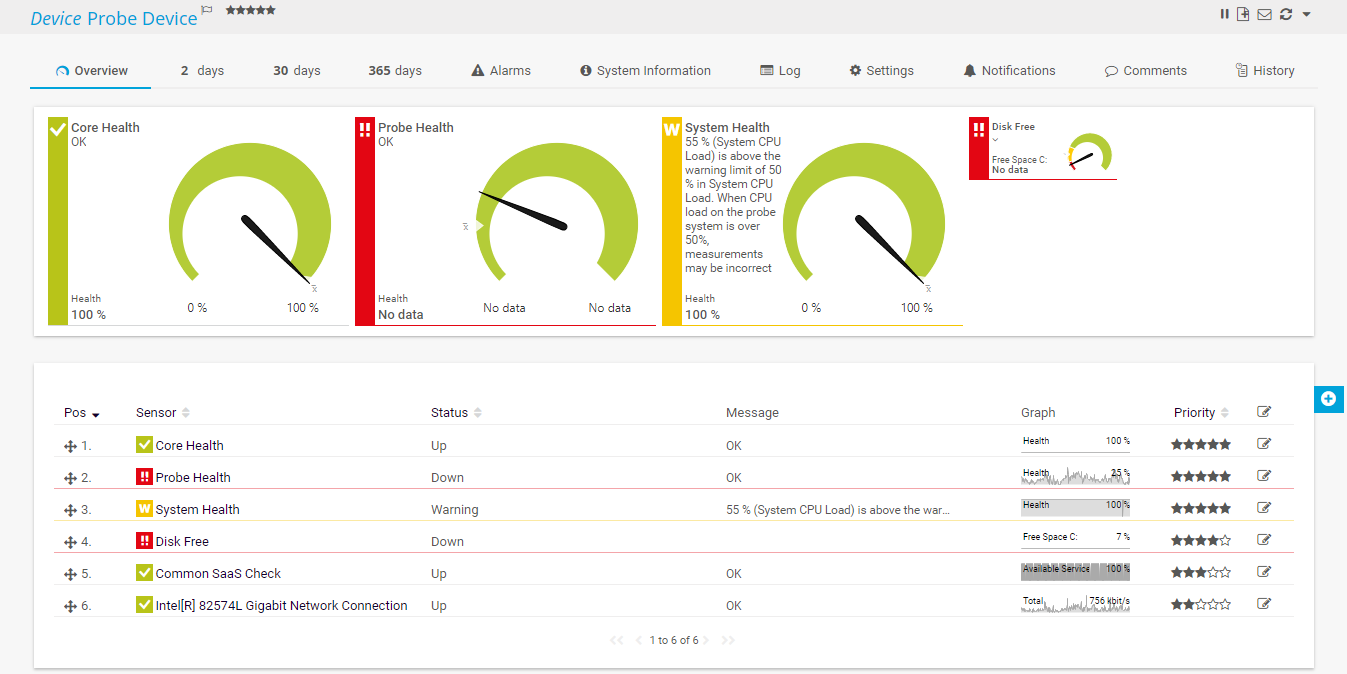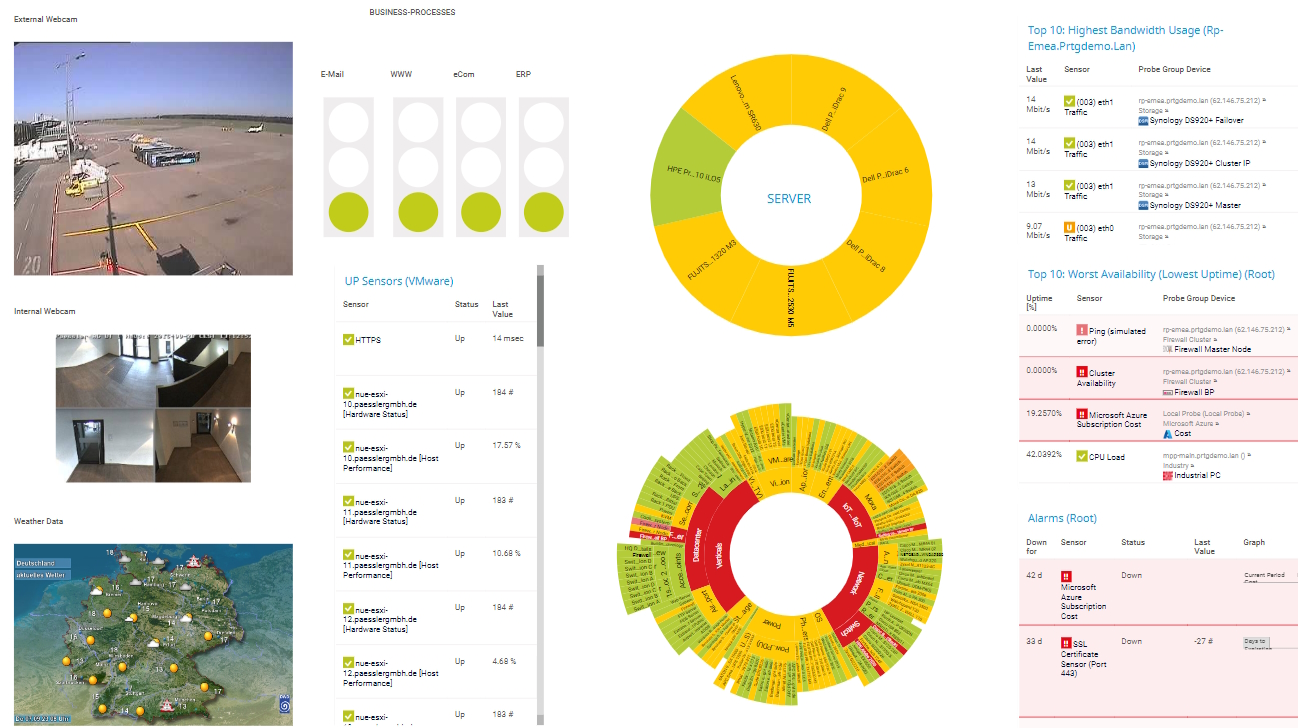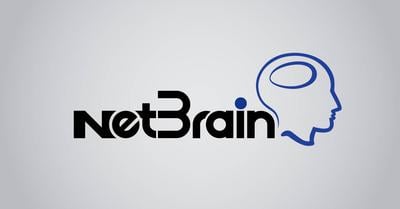Wi-Fi bandwidth monitoring with PRTG
Identify bandwidth-hungry hardware and software in your wireless infrastructure
- Monitor all your wireless network components like routers or switches
- Get real-time alerts when you're at risk of exceeding bandwidth capacity
- Manage your available bandwidth with complete, accurate data
PRTG Wi-Fi bandwidth monitoring: What you’ll find on this page
Achieve WiFi bandwidth quality over quantity
Struggling with spotty VoIP calls, slow transfer speeds, and connection failures?
Getting more bandwidth isn't necessarily the answer. How you're using the available network bandwidth is just as important if you want your Wi-Fi network to run smoothly.
With Paessler PRTG, you can see exactly which hardware components and software applications on your wireless network are the most bandwidth-hungry at any point in time. This will help you make short work of bottlenecks, manage bandwidth utilization, and distribute your resources more effectively.
Instead of spending more money for even more bandwidth, just make the most out of the resources you already have.
PRTG makes WiFi bandwidth monitoring as easy as it gets
Custom alerts and data visualizations let you quickly identify and prevent packet loss, network congestion, latency, jitter, and other connectivity problems.
PRTG is compatible with all major vendors, products, and systems
4 reasons why to choose PRTG as your WiFi bandwidth monitoring tool
Effortless setup
Nobody likes to spend multiple hours or even days with the setup of their new monitoring environment. With PRTG, you’ll get it up and running in minutes, with minimal tweaking (or hair-tearing).
Pick your preferred IP address range and the auto-discovery will add every device and application in that range, assign the appropriate sensors, and start tracking WiFi usage. That’s it.
Comprehensive monitoring
How does the idea sound to have a complete picture of your network bandwidth usage at your fingertips? PRTG's preconfigured, out-of-the-box sensors monitor every application, device, and process on your wireless network.
Pinpoint exactly where your network traffic is going, which components are underperforming as a result, and where you should direct your attention in your search for the culprit.
Proactive planning
Managing your network bandwidth is easy… when you have the right data and use the best bandwidth monitoring tools. Raise the curtain for PRTG: it tracks usage across your entire IT infrastructure in real time, enabling you to make adjustments on the fly.
Plus, you’ll get automated alerts the second your network’s at risk of exceeding capacity, so you can start troubleshooting right away.
Long-term visibility
Spot patterns and trends and make better-informed decisions about your network’s capacity. Over time, monitoring WiFi bandwidth with PRTG creates historical data, which gives you a better view of usage peaks and bandwidth hogs.
This way, you can plan ahead more easily and make more efficient use of your resources.
What WiFi network bandwidth monitoring looks like in PRTG
Diagnose network issues by continuously tracking the performance of your wireless network. Show router health, throughput, connection quality, and other key metrics in real time. Visualize monitoring data in clear graphs and dashboards to identify problems more easily. Gain the overview you need to troubleshoot all kinds of WiFi bandwidth issues.
Start monitoring Wi-Fi bandwidth with PRTG and see how it can make your network more reliable and your job easier.
More than monitoring WiFi bandwidth
PRTG gives network administrators access to powerful functionality that allows you to monitor bandwidth usage and much more across your entire network. You’ll be as fast as the roadrunner in finding the root cause of bandwidth bottlenecks. Track every variable that could possibly impact your bandwidth, including:
- Availability and utilization
- CPU load and memory
- Data packets
- Jitter
- Latency
- Quality of service (QoS)
- Network traffic data
PRTG’s more than 250 preconfigured sensor types support monitoring via SNMP, WMI, Windows performance counters, flow technologies (including NetFlow, sFlow, IPFIX, and jFlow) SSH, HTTP and HTTPS, and more.
Your Wi-Fi bandwidth monitor at a glance – even on the go
Set up PRTG in minutes and use it on almost any mobile device.


Find the root cause of the problem with our PRTG Wi-Fi bandwidth monitoring solution
Real-time notifications mean faster troubleshooting so that you can act before more serious issues occur.
Create innovative solutions with Paessler’s partners
Partnering with innovative vendors, Paessler unleashes synergies to create
new and additional benefits for joined customers.
ScriptRunner
With ScriptRunner, Paessler integrates a powerful event automation platform into PRTG Network Monitor.
“Excellent tool for detailed monitoring. Alarms and notifications work greatly. Equipment addition is straight forward and server initial setup is very easy. ...feel safe to purchase it if you intend to monitor a large networking landscape.”
Infrastructure and Operations Engineer in the Communications Industry, firm size 10B - 30B USD
PRTG makes WiFi bandwidth monitoring as easy as it gets
Custom alerts and data visualizations let you quickly identify and prevent packet loss, network congestion, latency, jitter, and other connectivity problems.

PRTG: The multi-tool for sysadmins
Adapt PRTG individually and dynamically to your needs and rely on a strong API:- HTTP API: Access monitoring data and manipulate monitoring objects via HTTP requests
- Custom sensors: Create your own PRTG sensors for customized monitoring
- Custom notifications: Create your own notifications and send action triggers to external systems
- REST Custom sensor: Monitor almost everything that provides data in XML or JSON format
We asked: would you recommend PRTG?
Over 95% of our customers say yes!
Paessler conducted trials in over 600 IT departments worldwide to tune its network monitoring software closer to the needs of sysadmins.
The result of the survey: over 95% of the participants would recommend PRTG – or already have.
Still not convinced?
More than 500,000
sysadmins love PRTG
Paessler PRTG is used by companies of all sizes. Sysadmins love PRTG because it makes their job a whole lot easier.
Monitor your entire IT infrastructure
Bandwidth, servers, virtual environments, websites, VoIP services – PRTG keeps an eye on your entire network.
Try Paessler PRTG
for free
Everyone has different monitoring needs. That’s why we let you try PRTG for free.
Start monitoring Wi-Fi bandwidth with PRTG and see how it can make your network more reliable and your job easier.
|
PRTG |
Network Monitoring Software - Version 25.1.104.1961 (April 7th, 2025) |
|
Hosting |
Download for Windows and cloud-based version PRTG Hosted Monitor available |
Languages |
English, German, Spanish, French, Portuguese, Dutch, Russian, Japanese, and Simplified Chinese |
Pricing |
Up to 100 sensors for free (Price List) |
Unified Monitoring |
Network devices, bandwidth, servers, applications, virtual environments, remote systems, IoT, and more |
Supported Vendors & Applications |
|













